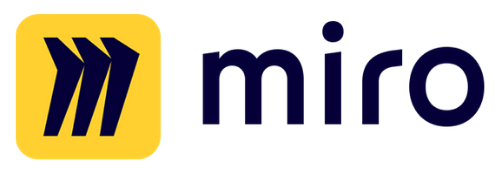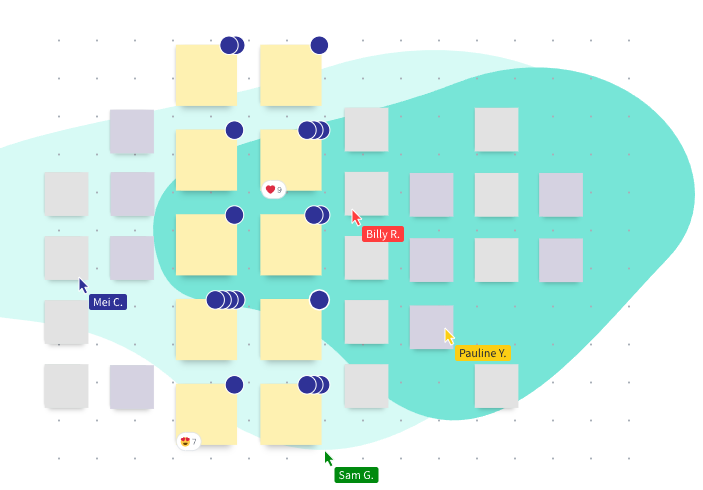Which of these whiteboard collaboration tools is best for you? Review our analysis here.
When choosing a collaborative, digital whiteboard tool to use with your innovation team, it can be difficult to know which one is the best option for your specific needs. There are many great software solutions available, including some of the options we’ve mentioned in our full list of Remote Work Software Tools on the blog. While Miro and MURAL are probably the most popular in the industry at the moment, strong options like Lucidspark are certainly worth considering. In this blog, we’ll cover a features comparison looking at the top options Lucidspark vs Miro!
Intro to Miro and Lucidspark
If you haven’t reviewed our previous introductory guides to Miro and Lucidspark, here’s a brief recap of the features that these two collaboration and whiteboard tools have in common:
- Freehand drawing, sticky notes, shapes, and lines, color-coded cursors on an infinite canvas whiteboard
- Built-in timer for meetings and timed brainstorm sessions
- Voting and polling
- Pre-built templates to inspire creative work
Below, we’ll provide reasons to use either option.
Reasons to Use Miro

- Extensive templates and resources: Miro has a near endless number of self- and community-created templates to choose from to get started.
- Integrations: Seamlessly connect to a wider range of apps, such as Slack, Microsoft Teams, Google Drive, and many more.
- Diagram maker: Easy and fast diagram creation for timelines, flowcharts, and more
- Easy exporting: Quickly take your boards offline with the easy export feature.
- Large groups: Perfect for larger groups and sessions as well as small teams.
- Hybrid working: All the integrations and add-ons make Miro a great centralized hub when managing a hybrid work environment.
Miro offers a limited free plan. Its Starter plan is $8/month per member and includes most of the features you need to get started.
Reasons to Use Lucidspark

- Breakout boards and chats: Facilitating meetings is a breeze with features that allow for large and small group sessions and discussions.
- Idea grouping and sorting: An easy way to look at insights by themes or trends. Tag ideas by priority, potential, or lift.
- Integrations: Lucidspark also has a great range of integrations, including Slack, Zoom, and of course, Lucidchart.
- Note panel: a great way to assign pre-readings before a meeting begins or include transcripts or meeting notes.
- Work from anywhere: Like Miro, Lucidspark allows you to work from anywhere – in the office, at home, or out and about.
Lucidspark offers a limited free plan. Its Team plan starts at $9/month per member and includes many of the features you need to get started, without the breakout sessions feature and Lucidchart integration.
Miro vs Lucidspark: Final Verdict
Ultimately, there are many reasons to use either Miro or Lucidspark and that decision will mainly come to personal preferences of which UI you like better! With many of the same features and integrations, Miro and Lucidspark will likely provide the value and tools you need to host successful innovation and design thinking sessions.
Using realtime collaborative whiteboard tools is a must in our virtual design thinking training workshops.
For personalized assistance using a digital whiteboard tool to implement or facilitate your own innovation workshop or design thinking event, reach out to us today.
